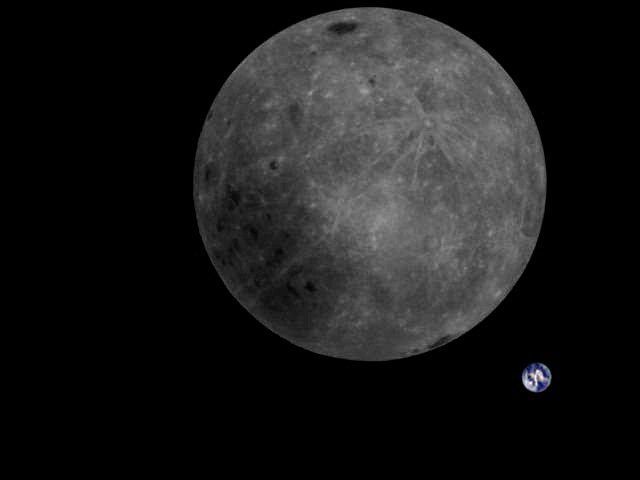Moon and earth

That lovely photograph was taken on February 3, 2019, by the Chinese Longjiang-2 satellite, which is orbiting the Moon. It’s a small photo, just 640×480 pixels, but what it shows belies its size; that is the Earth and Moon in one shot, a single image framing all of humanity.
Doesn’t the Moon look strange? That’s because you’re seeing the far side — in fact, the geometry dictates the only way to see the Earth and Moon together in one shot from lunar orbit is if you are over the far side at the time.
But that’s the side forever pointing away from Earth, so we cannot see it from the ground, or even low Earth orbit. To see this terrain you have to go to the Moon and then a bit past it; this view is a gift of the space age.
As is the famous earthrise photo.
It’s sad, isn’t it. We start to discover amazing things about space and even land research vehicles on Mars, and at the same time we wipe out all the insects and keep racing down a path leading to environmental disaster.

In a few million years timer, archaeologists of the future (human or otherwise) will be unable to distinguish or measure the time interval between our remains and those of the Neandertals, so rapid has our rise to technological prowess been. If our civilization and species crash and burn in the current crisis, that period of time will be a very thin layer capping hundreds of thousands of years human cultural development. Those who study the human fossil record in the future will ask themselves “what happened?” If they unearth and can decipher enough of our records, they will ask “How could they have done this? Why did they not stop?”
And it will not be something that “happened” or that we even “let happen.” It will have been something we did.
But the odds seem good that archaeologists of the future (human or otherwise) will be just as reckless and shortsighted as we are, because it’s very very difficult if not just impossible for natural selection to select for beings that can pass up current goods for the sake of future generations. They will always lose to the beings who take what they need right now.
If we don’t survive their won’t be any archaeologists of the future.
Unless some aliens pass by.
Indeed paradoxically, the very log term survival of life on Earth will be dependant on our successors (human or otherwise) for it’s continuation.
Life on earth, on a geological time scale is headed for a fairly imminent extinction, due to the warming sun.
Ironic isn’t it that life needs us, yet we seem not only unable to recognise our role in keeping things ticking here for a lot longer than would otherwise be the case but also seem intent on bringing about that disaster even sooner than if we had never been.
There their. Agh!
Natural selection is very unlikely to throw up another technological species anyway. That’s why I am advocating for an understanding of the possible future role of humanity (well successor species) in saving the planet from a certain destruction. Sure on a human time scale it’s a long way off. But maybe if we can develop this understanding of purpose for our species outside of it’s own survival, people will start to think differently. Or enough people to make a difference.
And the first thing of course is that we and our fellow life forms need to survive. Which brings us to the point of the previous article.
That is a stunning photo.
Thank you for the link.